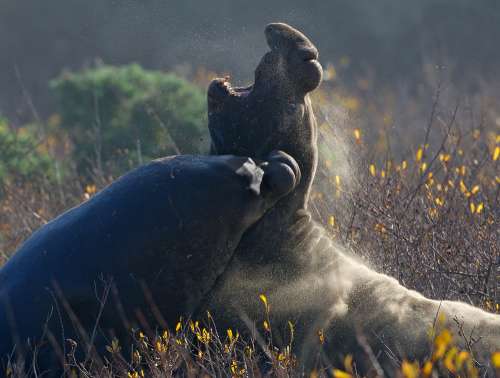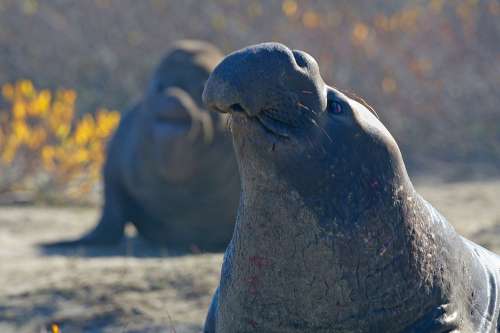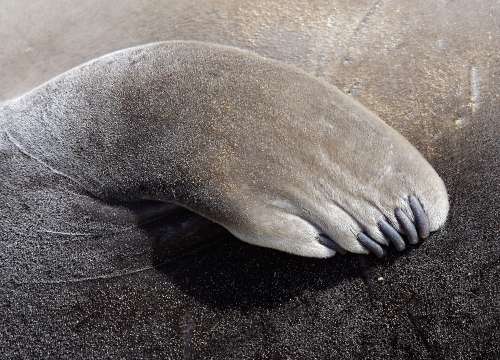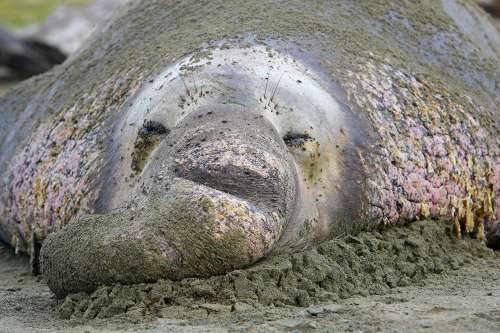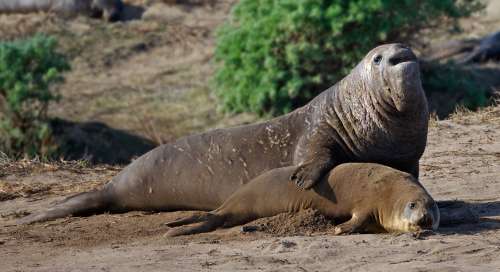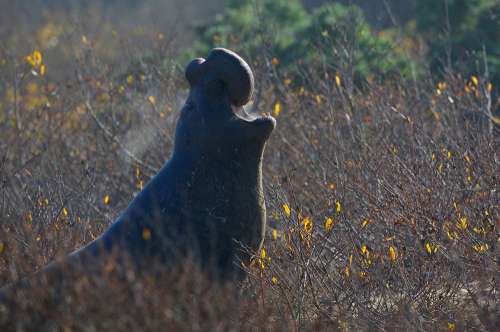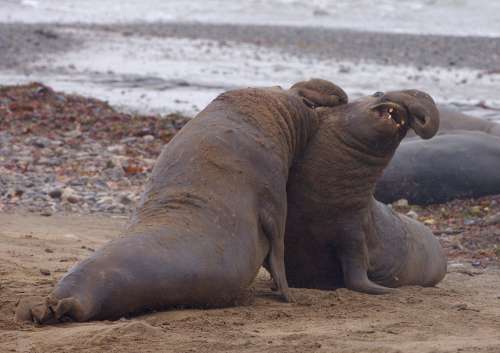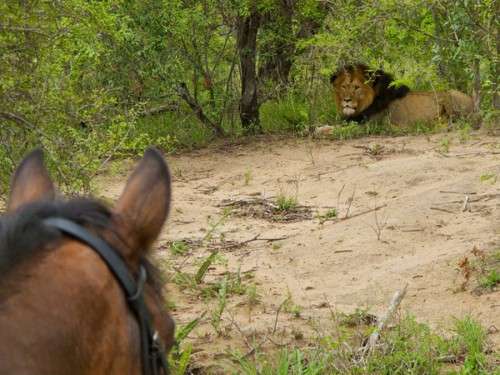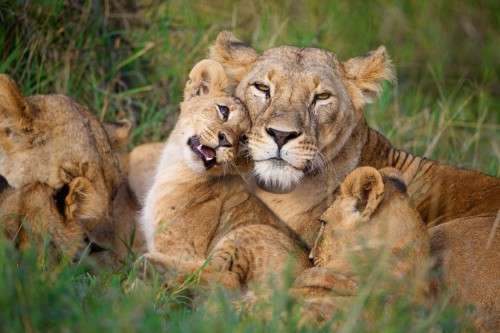The life of a scientist is an exercise in extracting information from signs. Nature speaks no words to convey her meanings, but though she is silent, she is endlessly and openly communicative. We scientists try to find a language through which to ask her questions; when we are successful, she replies. That’s how experiments work. We provoke responses from nature, then we interpret her answers.
As a child, I was drawn to the natural world. Although my family never camped, hiked, or visited the great national parks, my earliest memories of girlhood in northwest Indiana are of long hours spent in the woods and sand dunes behind our house. That was back when people raised free-range children, set loose in the morning to roam the neighborhoods and hillsides, then summoned for lunch and for dinner. Apart from meals, we wandered. Mostly the boys traveled in packs. Maybe the girls did too; I’m not sure. If they did, I didn’t see them. I was by myself, in the hills.
In retrospect, I think my fascination with animals grew from their remarkable expressivity. Sometimes their nonverbal language is blatant: one dog approaches another, head lowered, tail hanging. He slows and drops to a creep. A shoulder buckles and he rolls onto his back, legs akimbo, the pink skin of his belly exposed. One needs no interpreter to translate this deference into English: groveling looks the same in any language.
But not all behavior is so simple to comprehend. Some of us who are tuned in to animals see things that others don’t. Once, when watching dogs in a dog park, I knew a fight would erupt between two males. Their owners were clueless. As the two dogs approached one another, their bodies were angled slightly off-parallel. Their legs were stiff, tails up and rigid. They halted, shoulder to shoulder, necks turned to stare, eye to eye. The air around them crackled—they were poised to fight. And their owners said, “Oh how nice, they’re making friends.” I stepped back to stand clear of the bedlam, which did indeed follow, moments later.
This ability to call a punch before it’s thrown has served me well as a photographer. Reading animals and their intentions is a key to wildlife photography. The camera must trained on its subject at the instant of the action, when the cheetah trips the impala or the first wildebeest decides finally to leap into the Mara River. As I immersed myself in photography, I took to heart the advice of masters. They said: find a subject that you can photograph again and again. Get to know that subject intimately and learn to predict the shot before it happens. It was photography that led me to my local Serengeti, an hour from home—California’s Año Nuevo State Reserve, the starting point and finish line of one the planet’s great migrations.
Año Nuevo is a coastal breeding ground for the Northern elephant seal, a massive pinniped, or fin-footed mammal, that spends three-quarters of its life in deep ocean waters but returns to land twice a year. In winter they come to give birth and mate, and they return again in late spring and summer, to molt and shed old skin. Female elephant seals and their pups look like larger versions of most seals. They have huge black eyes that suck up light and reflect almost none. Their faces are sweet; their snouts are short and tidy.
Males, by contrast, are plug-ugly. The “elephant” in elephant seal refers to the nose or proboscis of the male seal, which resembles an abridged edition of an elephant’s trunk. The nose of a bull elephant seal grows with age and can reach two feet in length, but it never achieves the elegance of a true trunk. An elephant’s trunk is prehensile and expressive. It can pick up a single peanut from the ground, rise and curl into an S to scent the wind, or drape over the neck of a neighbor in casual affection.
The proboscis of the elephant seal, in contrast, seems a useless contraption, serving no obvious purpose apart from advertising the male’s gender. It must be flung backward when the bull bellows; it swings wildly when two bulls fight. Otherwise, it flops and dangles. In truth, it looks like a large, flaccid penis. I suspect this is why my friend Jerry cannot stand to look at elephant seals. He will not look at my photos of them, nor will he watch the episode about elephant seals on “Sunrise Earth,” even though he’s watched the series on the Discovery Channel and has seen most episodes many times. Jerry has no love for elephant seals.
Despite the phallic discomfiture they evoke, I adore elephant seals. The males are simple—they’re all about hormones. When they arrive at Año Nuevo for the winter mating season, their blood testosterone levels are among the highest measured in any mammal. Bulls care about two things: fighting and mating. Apart from that, they sleep. Conserving energy is essential since they’ll be on land for three months without eating or drinking. Their nearest food source is a thousand miles away, in deep water; leaving to eat would mean missing out on opportunities to mate.
After years of watching and photographing elephant seals, the bulls are as easy to read as dogs—I’ve learned to anticipate fights. The alpha bull controls a harem of females, which he defends from the amorous inclinations of subordinate beta bulls. Cows acquiesce to alpha domination because they’re focused on their babies; they don’t want to be hassled by males, and elephant seal bulls will try to mate with anything that fits their rough search image of a female (including an actual female, a nearly-mature juvenile, even a log). Females with pups would be harassed constantly by bulls were they not part of a harem. The alpha bull, in chasing off contenders, allows females the luxury of time to raise their pups in peace.
Standing on a sand dune, high above the southern point of the Año Nuevo peninsula, looking out over harems of alpha males, females, and pups, I watch the elephant seal soap opera. It’s full of sly glances and sneaky intrusions. An alpha bull reigns over a half-dozen to several dozen females. He lies in the midst of his harem, a nucleus around which beta bulls orbit. Lower ranking bulls appear to doze, but in fact they’re quite alert.
A large, mature bull emerges from the surf, fifty yards from an alpha bull. He heaves his body onto the beach. The alpha raises his head. The new bull flops forward, waves of fat rippling down his body. Planting his front flippers, rearing head and chest, the newcomer is massive and tall. He challenges the alpha from a distance by flinging back his head and bellowing a deep, echoing grunt.
The alpha rises up on front flippers, displaying his chest. He answers the challenger’s bellow. The two bulls stare, gauging one another’s size. In this context, don’t let anyone tell you that size doesn’t matter—it does. If the challenger is obviously smaller, he will retreat and give ground, undulating backwards so as not to lose face overtly. But if their sizes are comparable, he will make good his challenge, and the alpha will defend his harem. And here it comes—the alpha bull charges his rival at a speed faster than one would dream possible for such a massive and ungainly animal. The new bull surges forward.
They meet, each seal the weight of a sport utility vehicle. Rearing backward then lunging forward, each plunges a pair of two-inch-long canine teeth into the other’s neck. Blood stains their chests a lurid red, a garish contrast to the dull grays and browns of the surrounding seals and sand. Because the males have been fighting in play and practice for years, their necks and chests are thickened with scars; it’s this shield of scar tissue that protects them now from serious harm, when the stakes are serious. The fight might continue for one minute, or twenty, until one of the two tires and falters. In this case, it’s brief—despite the blood, no one is seriously injured, and the alpha keeps his harem.
There is action on the sidelines as well. As the two dominant bulls battle, a beta bull has been watching the scene and sneaks into the harem through the back door. He attempts to copulate with a female who is not ready for mating. Still nursing her pup, she yowls and barks at this unwelcome advance, thrashing flippers in protest as her pup scrambles away. Her refusal to mate is absolute; the beta bull is thwarted. And when the victorious alpha returns to the harem, the beta turns tail and runs—runs, at least in the manner of elephant seals: body flopping and heaving against the sand, he retreats, post haste, from the dominant bull. “Loser,” we taunt from the top of the dunes. Sneaky loser.

